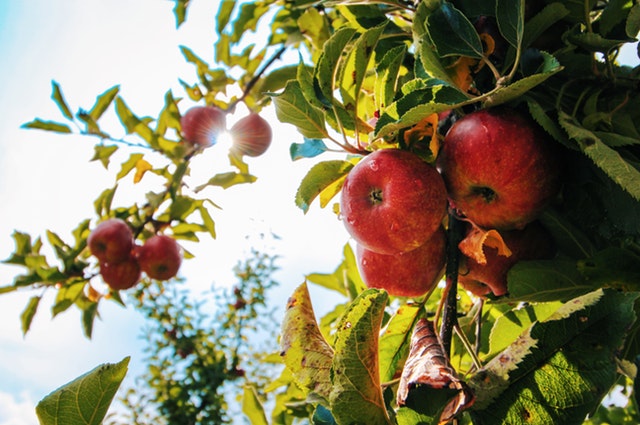Growing peaches in the Northeast organically has presented a challenge to orchardists for years. Peaches, in my opinion, are the perfect example of what it means to farm organically. It is all about preventing a problem rather than reacting to one when it arrives. The trouble with growing peaches is that typically by the time you see an issue, it is already too late to fix it. Here at Fertrell we realize the hardships that growers are having with not just peaches but apples, stone fruits, and grapes as well and we’ve worked hard to figure out a complete program to give the farmer’s a fighting chance to produce these commodities organically.
These programs start in the fall before the next growing season. Many insects and diseases like to take up residence on your property however there are several steps you can take to help premobility vent this. Make sure to remove any dropped, damaged, or mum¬mified fruits. Additionally, remove any branches that may be damaged, dead, or infected. You need to make sure the area surrounding your tree is clear of these things as well, not just the tree itself. Finally, remove all weeds around each tree.
Using a dormant oil application periodically through¬out dormancy will help control potential infections. In addition to the dormant oil, applying an application of a Bordeaux blend of 1 pound of sulfur, 1 pound of lime, and 10 ounces of Regalia for every 10 gallons of water in the late spring as your tree is about to wake up will give it a nice kick start against attackers.
Once the plant starts to wake up from winter dormancy you need to start following your fertilization program to make sure that your trees are able to meet their own nutrient demands as well as continue to build plant health. Remember that your trees aren’t the only things waking up in the spring – molds and diseases are waking up too. This is when you want to keep a tight regiment of the Bordeaux Blend I mentioned above applied every week with an additional application during periods of heavy rain as that is when the spores are looking for next their hosts and your trees will be susceptible.
Because there are so many insects that can affect your trees, make sure to keep an eye out for anything suspicious and contact us for help at the first sighting. This regiment should continue until the weather warms up and everything dries out. The plants susceptibility at this time should be lesser because most diseases do not like hot, dry weather and your plant has had ample time to build-up its nutrient reserves.
Scouting for various pests should be something that you should be doing in every season, even when the weather is warmer; with the only change being what you are scouting for. In the winter, infected or dead plant material. In the spring, signs of diseases or onset pests. In the summer, pests and pest damage.In the fall, signs of infection from various sources. The harvest is near and the petals are dropping. Plants are getting ready to go into dormancy and there are few crucial steps that can make or break next season for you. So even if you are busy do not skimp out! You’ll thank yourself next year!
